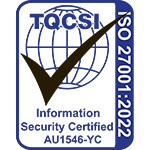Pattern Recognition
Pattern recognition:Pattern recognition is the process of identifying patterns in data. This can be done using a variety of methods, including machine learning, statistical analysis, and data mining. Pattern recognition can be used to find trends, make predictions, and make decisions.
Pattern recognition is an area of research within the field of artificial intelligence, computer science and engineering that focuses on recognizing patterns in data. It has a wide range of applications from image processing to speech recognition. This article aims to provide an overview of pattern recognition and its various components such as feature extraction, classification algorithms, clustering methods and their application areas.
The concept of pattern recognition can be traced back to the early studies in psychology where researchers were interested in identifying similarities among objects or situations. With advances in technology, this concept has been extended to include different types of data such as images, text documents and audio signals. The goal remains the same - identify meaningful patterns among input data which can then be used for further analysis or prediction tasks.
In recent years, there have been several breakthroughs in pattern recognition with new techniques being developed for better accuracy and faster computation time. In addition, advancements in machine learning have enabled the development of sophisticated models that are able to recognize complex patterns with greater precision than before. These developments have made it possible for pattern recognition to become an important tool for many industries including healthcare, finance and security.
What Is An Example Of Pattern Recognition?
Pattern recognition is a field of machine learning, artificial intelligence and data analytics that focuses on recognizing patterns in large datasets. It has applications in many areas such as facial recognition, optical character recognition, computer vision, image recognition and data mining. Pattern recognition algorithms are used to identify the underlying structure of data by analyzing meaningful features or attributes associated with it. For example, an algorithm can be used to recognize objects in an image or detect certain types of activities within a video sequence.
In addition to pattern recognition techniques being applied for object detection and activity recognition tasks, they can also be utilized for other purposes such as predicting future events based on past trends and uncovering hidden relationships between variables within a dataset. By leveraging existing models and combining them with new methods like deep learning, researchers have been able to achieve impressive results across various domains including natural language processing (NLP), robotics and autonomous vehicles. With further advancements in this area, we may soon see more widespread application of pattern recognition technology in our daily lives.
How Do Humans Recognize Patterns?
Pattern recognition is a cognitive process by which humans recognize patterns in the environment. A fundamental aspect of human cognition, pattern recognition involves analyzing information and forming context-based conclusions to create meaning from data. The ability to recognize patterns allows humans to classify objects quickly and accurately without having to individually examine each instance.
The human brain is able to detect patterns very effectively, but computers can also be used for this purpose through artificial intelligence (AI) systems such as pattern recognition algorithms and technology. These AI systems are based on sophisticated technologies such as sentiment analysis, big data analytics, unsupervised learning and training data sets that allow them to identify complex patterns in large datasets. Additionally, recent advancements in neuroscience have revealed how the fusiform gyrus region of the brain plays an important role in recognizing facial features and other patterns.
Pattern recognition techniques enable us to analyze large amounts of data more efficiently than ever before. By utilizing advanced methods like machine learning, natural language processing and computer vision, we can make sense out of huge volumes of unstructured or chaotic data - helping us find meaningful insights faster than manual processes would allow.
What Are The 3 Components Of The Pattern Recognition?
Pattern recognition is a significant field of research within computer science, in which complex algorithms are used to identify patterns or correlations among data sets. It has far-reaching applications for domains such as big data analytics, natural language processing and speech recognition. The three primary components of pattern recognition include the training set, feature extraction and classification methods.
The training set consists of a collection of labeled examples that are analyzed by the system to discover patterns in the data; these can then be applied when recognizing new inputs from the same domain. Feature extraction is a process that identifies relevant characteristics from raw input data — often referred to as ‘features’ — which may then be passed onto the next stage of analysis. Lastly, pose estimation method is an example of classifier based on machine learning techniques that determine whether features belong to one category or another using predefined labels associated with each class. This approach helps computers classify objects accurately without prior knowledge about their structure or composition.
In this context, pattern recognition enables machines to understand long term memory and discover meaningful relationships between large datasets more efficiently than ever before. By combining advanced technology with sophisticated machine learning techniques, scientists have been able to create powerful systems capable of identifying subtle trends in massive collections of data points, making it an invaluable tool in modern data science research.
How Does Pattern Recognition Work?
Pattern recognition is a core cognitive capacity used in the identification of objects, images, sounds or other inputs by humans. It can be thought of as an application of machine learning and involves the use of algorithms for feature selection and pattern classification. Pattern recognition plays an important role in computer-aided diagnosis (CAD) systems used to detect medical conditions such as cancer. In addition, it has many applications in language acquisition, image processing and robotics.
The process of pattern recognition typically involves top-down processing where data from the environment is compared against stored patterns in memory; this allows for efficient categorization and decision making. Thus, pattern recognition requires the understanding of different types of cell death – programmed cell death (apoptosis), autophagy or necrosis – which determine how cells respond to environmental signals. Furthermore, various statistical models are employed to identify patterns that may not be obvious at first glance.
TIP: To improve your understanding of how pattern recognition works, explore its practical applications in fields such as medicine and language acquisition. This will help you gain insight into the power and potential of this field.
Conclusion
Pattern recognition is an important component in data science and machine learning. It allows computers to detect patterns in large datasets, enabling them to make predictions without human input. Pattern recognition can be applied in a variety of applications ranging from object detection to facial recognition. Understanding how humans recognize patterns and the components involved in pattern recognition provides insight into how computers can replicate this process for more efficient results.
The three components of pattern recognition are feature extraction, similarity assessment, and decision making. Feature extraction involves identifying the features that distinguish one pattern from another. Once these features have been identified, similarity assessment determines the degree of similarity between different objects or groups of objects based on their characteristics. Finally, decision making uses all available information to decide which group an item belongs to by comparing it with similar items already classified.
By combining these elements effectively, successful pattern recognition can be achieved both manually and through computer algorithms. This technology has numerous real-world applications including medical diagnosis and financial forecasting. As advancements continue to be made in artificial intelligence and machine learning, further research into pattern recognition will provide improved solutions for various industries across the world.
PREVIOUS NARROW AI GLOSSARY TERM
Parallel distributed processing
NEXT NARROW AI GLOSSARY TERM
Pattern recognition algorithms
Pattern Recognition Definition
Exact match keyword: Pattern Recognition N-Gram Classification: Machine Learning, Image Recognition, Object Detection Substring Matches: Pattern, Recognition Long-tail variations: "machine learning for pattern recognition", "image recognition using machine learning" Category: Technology, Artificial Intelligence Search Intent: Information, Solutions, Purchase Keyword Associations: AI, Machine Learning, Data Analysis Semantic Relevance: Artificial Intelligence, Machine Learning, Computer Vision, Data Analysis Parent Category: Technology Subcategories: Artificial Intelligence, Machine Learning, Computer Vision, Data Analysis Synonyms: AI, Machine Learning.Computer Vision Similar Searches: AI in Pattern Recognition , Image Recognition Using Machine Learning Geographic Relevance: Global Audience Demographics: Business Professionals , Researchers , Students Brand Mentions: IBM Watson , Google Cloud Platform , Amazon Web Services Industry-specific data : Neural networks , Decision trees , Support Vector Machines Commonly used modifiers : "Applications" ,"Algorithms" ,"Latest trends" Topically relevant entities : Artificial Intelligence , Machine Learning , Computer Vision , Data Analysis , Neural Networks , Decision Trees , Support Vector Machines.Contact
To schedule a demo or learn more about our software products, please contact us:
"Larry will be our digital expert that will enable our sales team and add that technological advantage that our competitors don't have."
Kerry Smith
CEO, PFD Foods
$1.6 billion in revenue 
"Lion is one of Australasia’s largest food and beverage companies, supplying various alcohol products to wholesalers and retailers, and running multiple and frequent trade promotions throughout the year. The creation of promotional plans is a complicated task that requires considerable expertise and effort, and is an area where improved decision-making has the potential to positively impact the sales growth of various Lion products and product categories. Given Complexica’s world-class prediction and optimisation capabilities, award-winning software applications, and significant customer base in the food and alcohol industry, we have selected Complexica as our vendor of choice for trade promotion optimisation."
Mark Powell
National Sales Director, Lion
"At Liquor Barons we have an entrepreneurial mindset and are proud of being proactive rather than reactive in our approach to delivering the best possible customer service, which includes our premier liquor loyalty program and consumer-driven marketing. Given Complexica’s expertise in the Liquor industry, and significant customer base on both the retail and supplier side, we chose Complexica's Promotional Campaign Manager for digitalizing our spreadsheet-based approach for promotion planning, range management, and supplier portal access, which in turn will lift the sophistication of our key marketing processes."
Richard Verney
Marketing Manager
Liquor Barons

"Dulux is a leading marketer and manufacturer of some of Australia’s most recognised paint brands. The Dulux Retail sales team manage a diverse portfolio of products and the execution of our sales and marketing activity within both large, medium and small format home improvement retail stores. We consistently challenge ourselves to innovate and grow and to create greater value for our customers and the end consumer. Given the rise and application of Artificial Intelligence in recent times, we have partnered with Complexica to help us identify the right insight at the right time to improve our focus, decision making, execution, and value creation."
Jay Bedford
National Retail Sales Manager
Dulux

"Following a successful proof-of-concept earlier this year, we have selected Complexica as our vendor of choice for standardizing and optimising our promotional planning activities. Complexica’s Promotional Campaign Manager will provide us with a cloud-based platform for automating and optimising promotional planning for more than 2,700 stores, leading to improved decision-making, promotional effectiveness, and financial outcomes for our retail stores."
Rod Pritchard
Interim CEO, Metcash - Australian Liquor Marketers
$3.4 billion in revenue 
"After evaluating a number of software applications and vendors available on the market, we have decided to partner with Complexica for sales force optimisation and automation. We have found Complexica’s applications to be best suited for our extensive SKU range and large set of customers, being capable of generating recommendations and insights without burdening our sales staff with endless data analysis and interpretation.
Aemel Nordin
Managing Director, Polyaire
"DuluxGroup is pleased to expand its relationship with Complexica, a valued strategic partner and supplier to our business. Complexica’s software will enable DuluxGroup to reduce the amount of time required to generate usable insights, increase our campaign automation capability, personalise our communications based on core metrics, and close the loop on sales results to optimise ongoing digital marketing activity."
James Jones
Group Head of CRM, DuluxGroup
"Instead of hiring hundreds of data scientists to churn through endless sets of data to provide PFD with customer-specific insights and personalised recommendations, Larry, the Digital Analyst® will serve up the answers we need, when we need them, on a fully automated basis without the time and manual processes typically associated with complex analytical tasks.”
Richard Cohen
CIO, PFD Foods
$1.6 billion in revenue 
"As a global innovator in the wine industry, Pernod Ricard Winemakers is always seeking ways to gain efficiencies and best practices across our operational sites. Given the rise of Artificial Intelligence and big data analytics in recent times, we have engaged Complexica to explore how we can achieve a best-in-class wine supply chain using their cloud-based software applications. The engagement is focused on Australia & New Zealand, with a view to expand globally."
Brett McKinnon
Global Operations Director, Pernod Ricard Winemakers
"70% - 80% of what we do is about promotional activity, promotional pricing -- essentially what we take to the marketplace. This is one of the most comprehensive, most complex, one of the most difficult aspect of our business to get right. With Complexica, we will be best in class - there will not be anybody in the market that can perform this task more effectively or more efficiently than we can."
Doug Misener
CEO, Liquor Marketing Group
1,400+ retail stores 
"The key thing that makes such a difference in working with Complexica is their focus on delivering the business benefits and outcomes of the project."
Doug Misener
CEO, Liquor Marketing Group
1,400+ retail stores 
"Australia needs smart technology and people, and it has been a great experience for me to observe Complexica co-founders Zbigniew and Matt Michalewicz assemble great teams of people using their mathematical, logic, programming, and business skills to create world-beating products. They are leaders in taking our bright graduates and forging them into the businesses of the future."
Lewis Owens
Chairman of the Board, SA Water 
"Having known the team behind Complexica for some years ago now, I am struck by their ability to make the complex simple - to use data and all its possibilities for useful purpose. They bring real intelligence to AI and have an commercial approach to its application."
Andrew McEvoy
Managing Director, Fairfax Media - Digital 
"I have worked with the team at Complexica for a number of years and have found them professional, innovative and have appreciated their partnership approach to delivering solutions to complex problems."
Kelvin McGrath
CIO, Asciano 
“Working with Complexica to deliver Project Automate has been a true partnership from the initial stages of analysis of LMG’s existing processes and data handling, through scoping and development phase and onto delivery and process change adoption. The Complexica team have delivered considerable value at each stage and will continue to be a valued partner to LMG."
Gavin Saunders
CFO, Liquor Marketing Group 
“Complexica’s Order Management System and Larry, the Digital Analyst will provide more than 300 Bunzl account managers with real-time analytics and insights, to empower decision making and enhanced support. This will create more time for our teams to enable them to see more customers each day and provide the Bunzl personalised experience.”
Kim Hetherington
CEO, Bunzl Australasia 
"The team behind Complexica develops software products that are at the cutting edge of science and technology, always focused on the opportunities to deliver a decisive competitive edge to business. It has always been a great experience collaborating with Matthew, Zbigniew and Co."
Mike Lomman
GM Demand Chain, Roy Hill Iron Ore 
"The innovations that the Complexica team are capable of continue to amaze me. They look at problems from the client side and use a unique approach to collaborating with and deeply understanding their customers challenges. This uniquely differentiates what they bring to market and how they deliver value to customers."
John Ansley
CIO, Toll Group 
"Rather than building out an internal analytics team to investigate and analyse countless data sets, we have partnered with Complexica to provide our sales reps with the answers they need, when they need them, on a fully automated basis. We are excited about the benefits that Larry, the Digital Analyst will deliver to our business.”
Peter Caughey
CEO, Coventry Group 
“Complexica’s Order Management System and Larry, the Digital Analyst will provide more than 300 Bunzl account managers with real-time analytics and insights, to empower decision making and enhanced support. This will create more time for our teams to enable them to see more customers each day and provide the Bunzl personalised experience.”
Kim Hetherington
CEO, Bunzl Australasia 
"After an evaluation process and successful proof-of-concept in 2016, we have chosen to partner with Complexica to upgrade the technological capability of our in-field sales force. The next-generation Customer Opportunity Profiler provided by Complexica will serve as a key tool for sales staff to optimise their daily activities, personalise conversations and interactions with customers, and analyse data to generate actionable insights."
Stephen Mooney
Group Sales Capability Manager, DuluxGroup
$1.7 billion in revenue
"After evaluating a number of software systems available in the marketplace, we have ultimately selected Complexica as our vendor of choice for sales force automation and CRM. Given the large SKU range we carry and very long tail of customers we serve, Complexica’s applications are best suited to deal with this inherent complexity without burdening our staff with endless data entry."
Nick Carr
CEO, Haircaire Australia
Australia's largest distributor of haircare products
“Asahi Beverages is Australia’s largest brewer, supplying a leading portfolio to wholesalers and retailers, including some of Australia’s most iconic brands. Last year Asahi Beverages acquired Carlton & United Breweries, which is its Australian alcohol business division. To harness the strength of our expanded portfolio, we partner with our customers to run multiple and frequent trade promotions throughout the year, delivering long-term growth for both our business and theirs. Given the inherent complexity in optimising promotional plans and our continued focus on revenue and growth management, we have selected Complexica as our vendor of choice after a successful Proof-of-Concept of its world-class optimisation capabilities.”
Kellie Barnes
Group Chief Information Officer
Asahi Beverages
"Dulux is a leading marketer and manufacturer of some of Australia’s most recognised paint brands. The Dulux Retail sales team manage a diverse portfolio of products and the execution of our sales and marketing activity within both large, medium and small format home improvement retail stores. We consistently challenge ourselves to innovate and grow and to create greater value for our customers and the end consumer. Given the rise and application of Artificial Intelligence in recent times, we have partnered with Complexica to help us identify the right insight at the right time to improve our focus, decision making, execution, and value creation."
Jay Bedford
National Retail Sales Manager, DuluxGroup
"At Liquor Barons we have an entrepreneurial mindset and are proud of being proactive rather than reactive in our approach to delivering the best possible customer service, which includes our premier liquor loyalty program and consumer-driven marketing. Given Complexica’s expertise in the Liquor industry, and significant customer base on both the retail and supplier side, we chose Complexica's Promotional Campaign Manager for digitalizing our spreadsheet-based approach for promotion planning, range management, and supplier portal access, which in turn will lift the sophistication of our key marketing processes."
Richard Verney
Marketing Manager, Liquor Barons


































